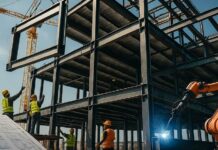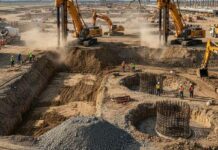In the years that have gone by, the construction industry has gone on to face increasing pressure in order to adopt greener practices as well as achieve net zero carbon emissions objectives by 2050.
Despite this growing demand when it comes to sustainability, the sector goes on to grapple with legislative uncertainties as well as a lack of accurate data for consistent measurement when it comes to construction materials all across their lifecycle.
An area of difficulty happens to be the ongoing debate over the reform of Energy Performance Certificates- EPCs. While legally valid, such documents happen to be criticized by sector professionals due to their inaccuracy as well as oversimplified energy efficiency ratings. EPCs go on to rely more on predicted or even designed performance than actual energy use, thereby providing an incomplete picture of the energy efficiency of a building. The inaccuracy when it comes to EPCs, which happen to be heavily relied upon by all those who are involved in a construction project, right from property owners, to builders, and also regulatory bodies, goes on to highlight a broader requirement when it comes to common standards and measurement practices in order to drive investment into energy-efficient buildings.
The Royal Institution of Chartered Surveyors’ RICS updated global sustainability report, which is a comprehensive analysis of green building practices, puts further focus on the construction industry’s approach in terms of carbon measurement.
Looking out for solutions
The RICS report goes on to identify numerous major areas that go on to urgently need to be addressed. One of them is that one-third of industry professionals regard the dearth of common standards as a major obstacle when it comes to investment. Another is that sector stakeholders must be able to gauge the scope of carbon emissions if they are actually looking to manage and even measure them effectively.
In order to address the challenges that are outlined in the report, RICS goes on to propose three important points for the construction sector, which are an elevated focus on education as well as qualifications, syncing carbon pricing with other policies like those that focus on energy efficiency as well as minimum energy performance benchmarks, and a stress on enhancing circular economy practices by way of digitalization.
Among them, digitalization goes on to emerge as a distinct solution, specifically when taking into account the benefits of standardized data. Digital tools can also enable professionals to collect, store, as well as share crucial data when it comes to materials and products. Technical traits of specific building elements and other relevant data can go on to be recorded by way of making use of building information modelling- BIM.
Standardized data as a solution
Standardised data enables anyone who happens to be involved in a construction project to be able to witness all the properties that go on to make up building materials, like windows, for instance, and also include the generic properties, which are height, width, and volume, as well as volume and also its environmental properties pertaining to energy use as well as carbon footprint.
A major advantage of standardized data happens to be its accuracy as well as continuous measurement when it comes to construction materials all through their lifecycle. So as to understand the carbon emissions coming from a specific material or even a product across its lifecycle, measurement requires that it begin right from the point of specification for building materials through to their design, manufacturing, purchasing, distribution, as well as installation.
It is well to be noted that industry-led data dictionaries like Define go on to play a pivotal role when it comes to facilitating this measurement by way of implementing these standardized data formats, which create a single source of truth, which is a concept that is used to make sure that everyone who happens to be involved in a construction project goes on to base decisions on similar data.
The fact is that the standardized data templates also go on to present a straightforward means to exchange data around all the products as well as materials that are used in a project. They go on to offer a framework within which to agree to an approach to recording the defining traits of products as well as materials, as per both international as well as European data standards.
Ultimately, all this goes on to simplify the comparison of products for those who are involved in a construction project while at the same time also ensuring that measurement happens to be accurate, thereby helping the construction industry to go ahead and meet carbon neutrality objectives.
As the construction industry looks out for greener practices along with net zero carbon emissions, standardized data is indeed going to be very crucial. The insights from the RICS report highlight the urgency when it comes to adopting common standards so as to overcome uncertainties on legislative aspects and also enhance precision when it comes to carbon measurement. By making the utmost use of digital tools and also embracing standardized data practices, the sector can go on to pave the way for a more sustainable as well as transparent future.
































